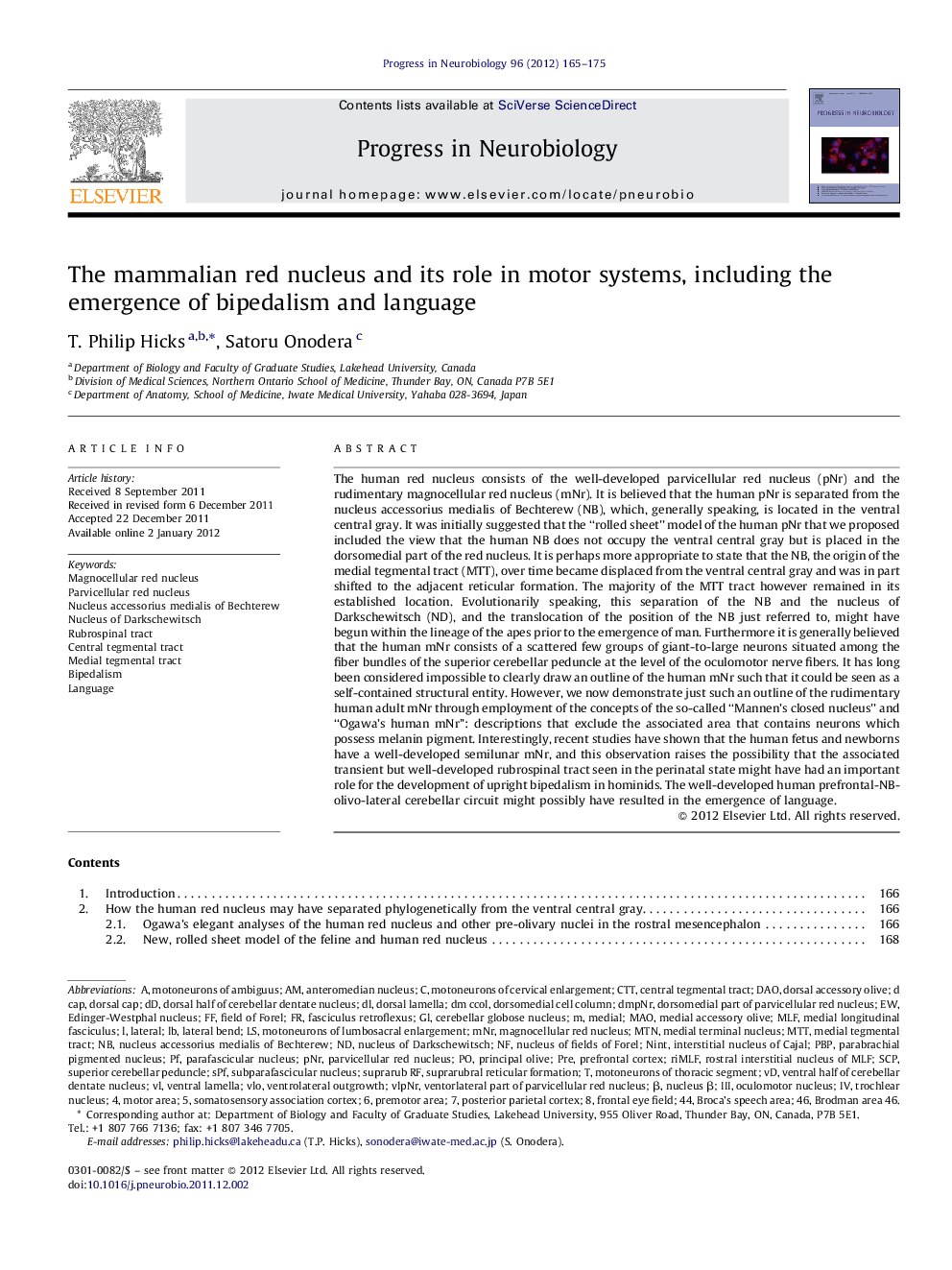| Article ID | Journal | Published Year | Pages | File Type |
|---|---|---|---|---|
| 4353426 | Progress in Neurobiology | 2012 | 11 Pages |
The human red nucleus consists of the well-developed parvicellular red nucleus (pNr) and the rudimentary magnocellular red nucleus (mNr). It is believed that the human pNr is separated from the nucleus accessorius medialis of Bechterew (NB), which, generally speaking, is located in the ventral central gray. It was initially suggested that the “rolled sheet” model of the human pNr that we proposed included the view that the human NB does not occupy the ventral central gray but is placed in the dorsomedial part of the red nucleus. It is perhaps more appropriate to state that the NB, the origin of the medial tegmental tract (MTT), over time became displaced from the ventral central gray and was in part shifted to the adjacent reticular formation. The majority of the MTT tract however remained in its established location. Evolutionarily speaking, this separation of the NB and the nucleus of Darkschewitsch (ND), and the translocation of the position of the NB just referred to, might have begun within the lineage of the apes prior to the emergence of man. Furthermore it is generally believed that the human mNr consists of a scattered few groups of giant-to-large neurons situated among the fiber bundles of the superior cerebellar peduncle at the level of the oculomotor nerve fibers. It has long been considered impossible to clearly draw an outline of the human mNr such that it could be seen as a self-contained structural entity. However, we now demonstrate just such an outline of the rudimentary human adult mNr through employment of the concepts of the so-called “Mannen's closed nucleus” and “Ogawa's human mNr”: descriptions that exclude the associated area that contains neurons which possess melanin pigment. Interestingly, recent studies have shown that the human fetus and newborns have a well-developed semilunar mNr, and this observation raises the possibility that the associated transient but well-developed rubrospinal tract seen in the perinatal state might have had an important role for the development of upright bipedalism in hominids. The well-developed human prefrontal-NB-olivo-lateral cerebellar circuit might possibly have resulted in the emergence of language.
► We review evidence for separating of the parvicellular red nucleus (pNr) and the nucleus of Bechtrew. ► We justify proposing a new “rolled sheet” model of the human pNr. ► Bipedalism and language development in man possibly were linked to development of pyramidal tract. ► Transition from mesencephalic motor control to pyramidal pathways was permissive of such change. ► “Mannen's closed nucleus” concept helps yield border limits to magnocellular red nucleus in human.
